Liposuction
Liposuction, also known as “lipoplasty,” is a surgical procedure that removes fat deposits from under your skin and areas of the body that are difficult to target with diet and exercise.
Model
Liposuction procedure restores a more slender, attractive physique. You may choose to have this procedure if you want to slim or reshape areas of your body. If you’re considering liposuction surgery, consult a board-certified plastic surgeon. It’s important to understand what liposuction surgery entails, including possible risks and complications as well as set realistic expectations.
Model
Am I a candidate for liposuction?
If you answer “yes” to any of the following questions, a liposuction may be right for you:
- Are diet and exercise unable to achieve the abdominal appearance you desire?
- Do you have excess fat and hanging skin following weight loss or pregnancy?
- Does your abdomen have a loss of skin elasticity or diastasis recti (stretched or separated abdominal muscles) due to pregnancy or aging?
- Do you want to remove unsightly skin and fat deposits, as well as properly align your abdominal muscles, to produce a more flattering appearance?
Liposuction Before & After Photos
Details
10 month postop
- Procedure: Liposuction with abdominal etching
- Age: 35-45 yo female
- BMI: 20
- Weight: 118 lbs
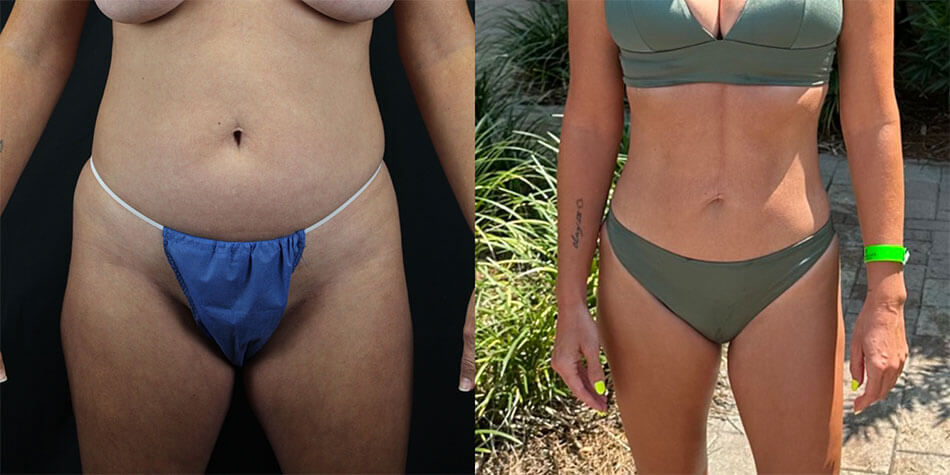
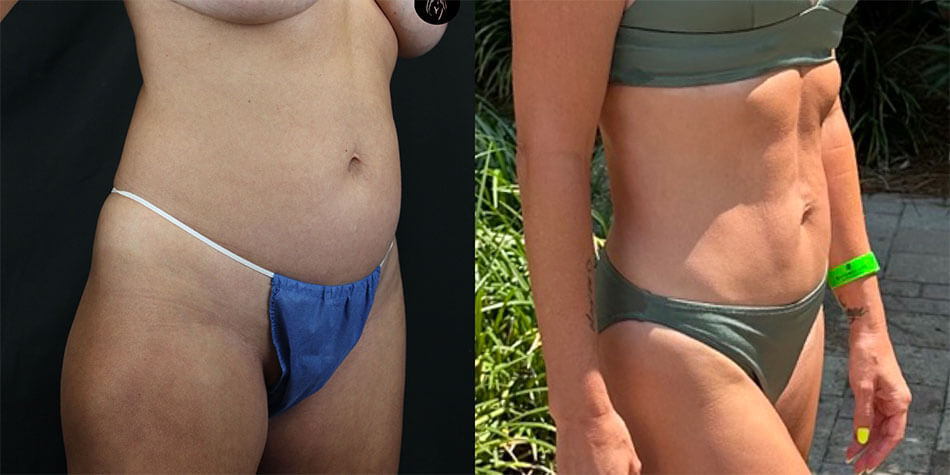
Details
6 weeks post op
submental and neck liposuction, buccal fat pad removal, .45ml chin filler and 40 units massetter neurotoxin.
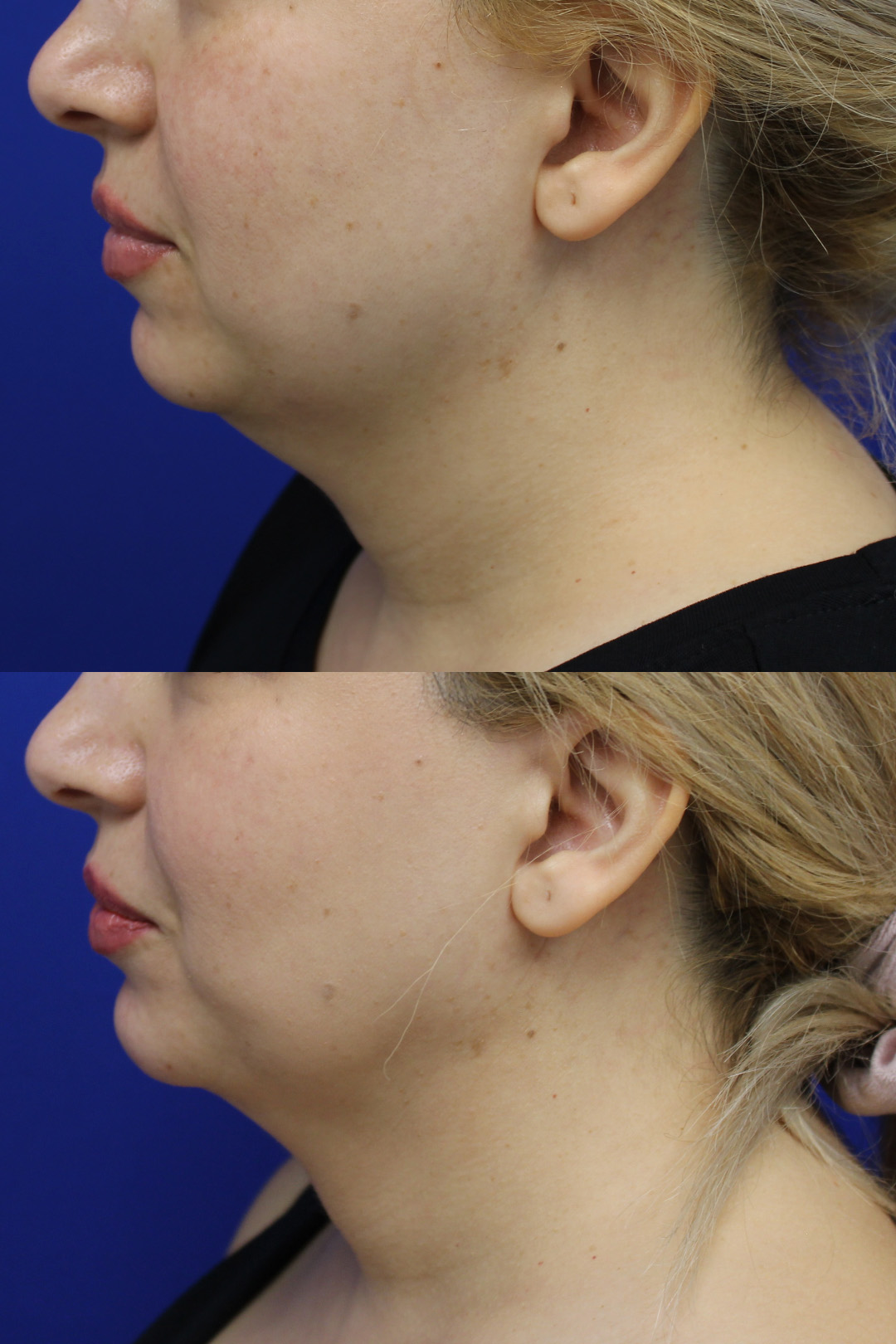
How can liposuction help?
Eliminate Stubborn Fat
Patients who have achieved a healthy weight through diet and exercise are often left with areas of fat deposits that are difficult to eliminate. These fat deposits can be removed with liposuction from the abdomen, flanks, back, arms and thighs. Liposuction can be performed to remove this stubborn fat and produce a more slender midsection and provide a better contour to your torso and extremities. In addition, liposuction can sometimes be used for breast reduction or treatment of gynecomastia.
Improved Body Contour
When you gain weight, fat cells increase in size and volume. In turn, liposuction reduces the number of fat cells in a specific area. The amount of fat removed depends on the appearance of the area and the volume of fat. The resulting contour changes are generally permanent as long as your weight remains stable. After liposuction, the skin molds itself to the new contours of the treated areas. If you have good skin tone and elasticity, the skin is likely to appear smooth.
Liposuction – What to Expect
Liposuction is one of the most rewarding procedures for patients who want to improve their physique, and the entire process from preparation to recovery is really quite simple. It is performed using a specialized suctioning device, excess fat deposits are permanently removed through small incisions using a thin hollow tube called a cannula.
Treatable Areas
Liposuction is a very versatile procedure that can be used to remove stubborn fat from almost any area of the body. It is often done to remove fat from the thighs, buttocks, belly, or upper arms. It is done in an outpatient setting and on occasion can be done in the office.
Neck and Cheeks
Excess fat in the neck can create a double chin. Liposuction can restore a smoother profile to the neck and improve definition in the face and along the jawline.
Arms
The accumulation of fat in the backs of the arms can lead to embarrassing flab that hangs and jiggles with every movement, making many feel self-conscious when wearing clothing that exposes this area. Liposuction can remove this excess fat to restore more slender arms with better definition.
Abdomen and Waist
The midsection is one of the most difficult areas to rid of stubborn fat. Liposuction produces a slimmer waistline and flatter abdomen by eliminating this resistant fat for good.
Back and Flanks
Many men have extra fat on their backs and sides just above their waists, and women commonly have unnecessary fat along their bra line. Liposuction can reduce this fat to achieve a smooth back and eliminate stubborn “love handles.”
Buttocks
Fat deposits that gather in the buttocks can cause permanent sagging and loss of a pleasant butt shape. Liposuction will restore a firmer, rounder contour to the buttocks to improve the overall appearance of the butt.
Hips and Thighs
Excessive fat in the hips and thighs can cause unsightly “saddlebags” to develop, often resulting in discomfort and embarrassment. Liposuction can provide a slimmer appearance and sculpt your hips and thighs to help make your body bikini-ready and boost your confidence.
Knees and Ankles
Excess fat accumulation in the lower legs can result in flabby knees and “cankles,” causing many to hide their legs even during the warmer summer months. Liposuction can effectively rid these areas of unwanted fat and sculpt the legs into a thinner and more defined shape.
Liposuction Before & After Photos
Details
6 month postop
- Procedure: Liposuction 360 with abdominal etching, Fat grafting to pectoralis major, deltoid, and biceps
- Age: 35-45 yo male
- BMI: 30
- Weight: 213 lbs
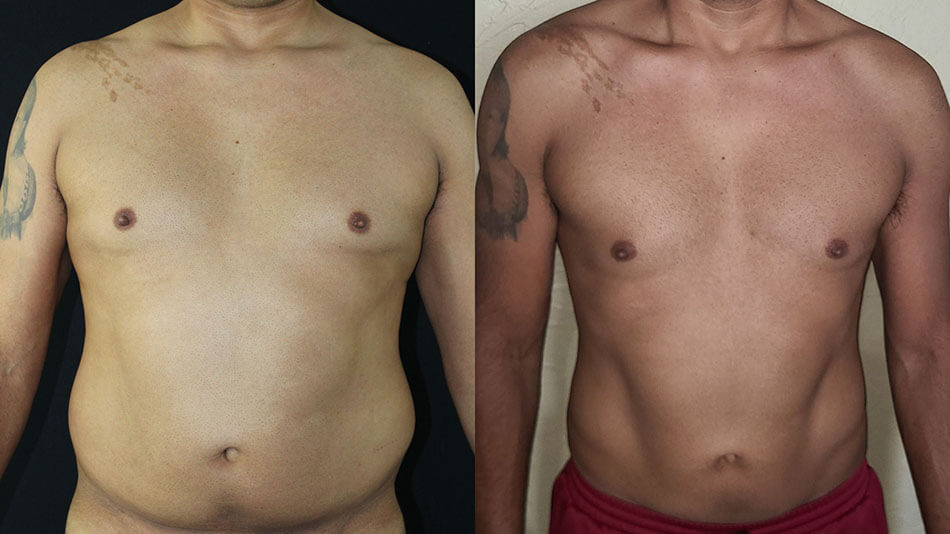
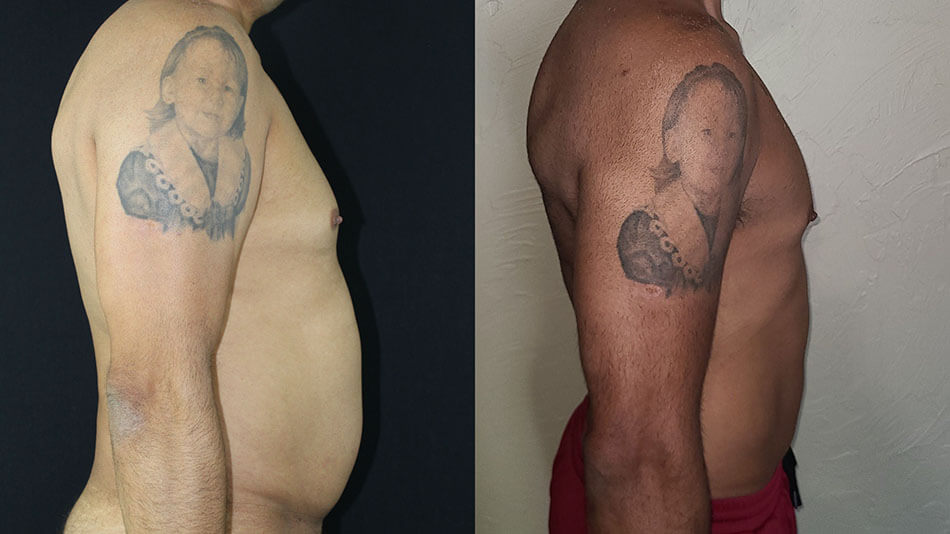
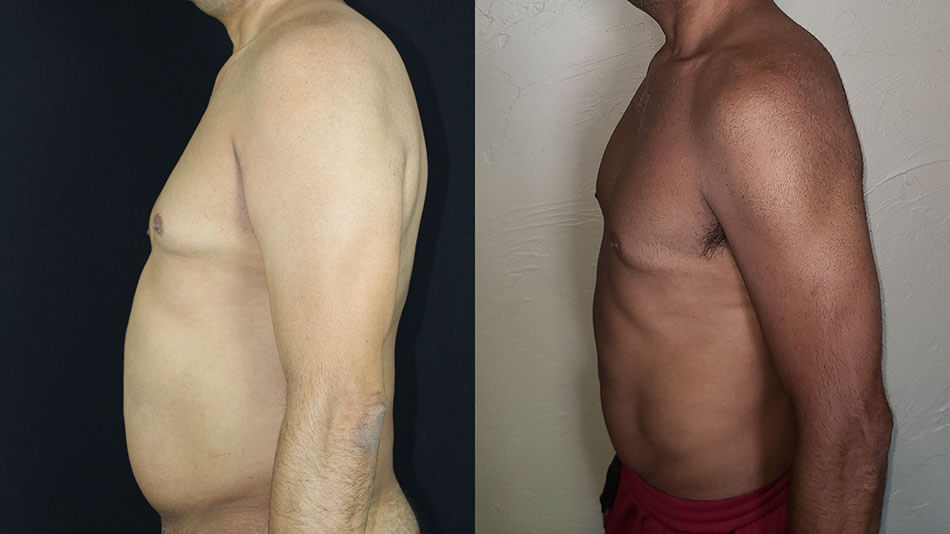
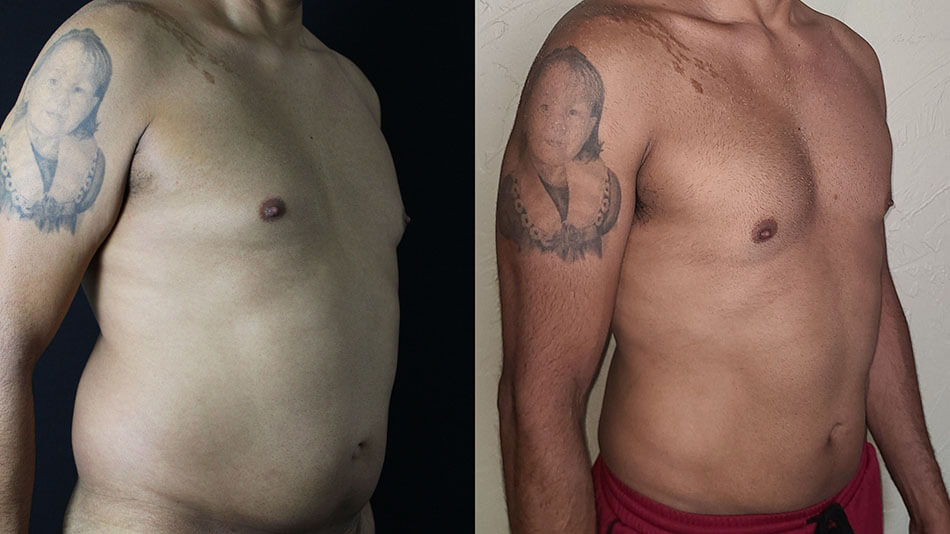
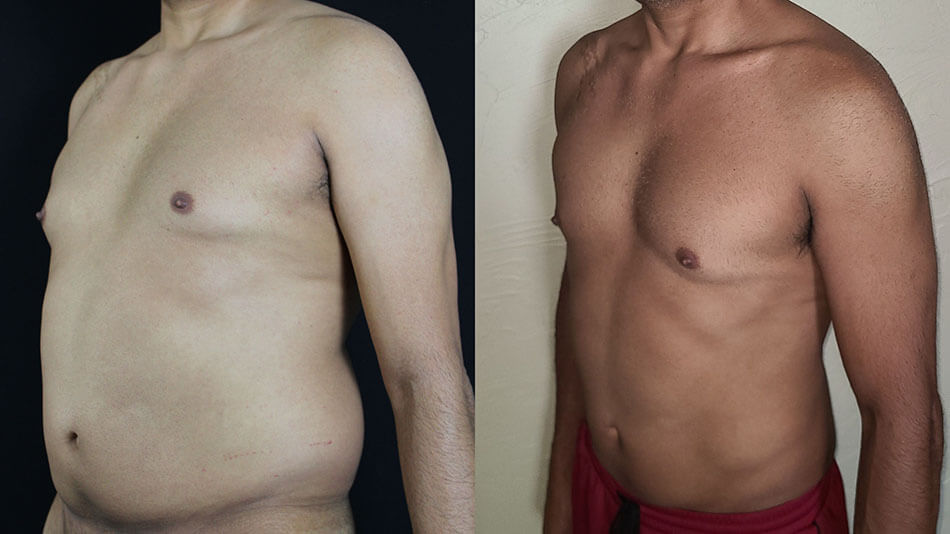
The Liposuction Process
Consultation
Once you fill out the online questionnaire, you will be contacted to confirm an appointment for a one-on-one consultation with the surgeon. You may also provide photos through our HIPAA compliant system and during your visit your surgeon can provide a personal 3D simulation using your own photos. This tool is a powerful education tool that helps identify what can and cannot be performed.
This appointment also includes an analysis of your health history, any medications you are taking, and what you desire to achieve with the procedure. Please have all of this information with you when you come to your appointment. All of which can be submitted electronically through our HIPAA compliant patient portal.
Your surgeon will discuss the areas of fat to remove that will best provide you with the results you desire and answer any questions you may have.
Preoperative Instructions
Your surgeon will review in detail all of the information you need to know prior to surgery.
Generally, patients should avoid nicotine products six weeks before surgery and stop taking anti-inflammatory medication (e.g., aspirin and ibuprofen) for at least two weeks before surgery. Some vitamins and supplements may also cause problems during or after surgery, so it is best to avoid them or to talk to your surgeon about potential side effects.
You may be asked to bathe using an antibacterial soap before your procedure.
Eating and drinking restrictions include:
- 8 hours before the procedure – stop eating heavy meals or foods, such as meat, fried foods, or fatty foods.
6 hours before the procedure – stop eating light meals or foods, such as toast or cereal.
6 hours before the procedure – stop drinking milk or drinks that contain milk.
2 hours before the procedure – stop drinking clear liquids.
You may be asked to obtain blood tests.
Be sure to arrange for someone to drive you home and care for you for the first 48 hours after your procedure.
Models
During the Procedure
Liposuction is performed with general anesthesia, in a surgery center, and time is variable based on the area and amount of fat to be removed. An IV will be inserted into one of your veins. Based on the areas of fat to remove agreed upon during your consultation. It is performed using a specialized suctioning device, excess fat deposits are permanently removed through small incisions using a thin hollow tube called a cannula. The surgeon will place small incisions in inconspicuous areas. they are closed with absorbable sutures and covered with surgical tape. Sometimes the incisions are left open to allow drainage. In many cases drains are used.
Recovery
After surgery, your blood pressure, heart rate, breathing rate, and blood oxygen level will be monitored until you leave the surgical center. You may continue to receive fluids and pain medicines through an IV.
You will have to wear compression stockings and portable sequential compression devices to help prevent blood clots and reduce swelling in your legs. You will be advised to wear a girdle or bodysuit with mild compression to aid in decreasing the swelling and to keep you comfortable. Compression garments are worn 24/7 for first four weeks. Swelling will typically subside after about a few months but may last as long as 6 months.
Expect pain, bruising, and tenderness for which you will be provided pain medications as needed.
For the first few days after surgery you will need to get plenty of rest. Most patients are able to return to work in two weeks and resume regular exercise after about six weeks. After a couple of weeks, swelling and bruising will subside and the contours of your body will be noticeably slimmer and more defined. The results of liposuction are generally permanent, and patients can maintain their results by following a healthy diet and exercise regimen.
Your surgeon will give you more detailed information about what you can expect during your recovery.
Liposuction Before & After Photos
Details
2 month postop
- Procedure: Liposuction and abdominal etching
- Age: 35-45 yo female
- BMI: 20
- Weight: 118 lbs
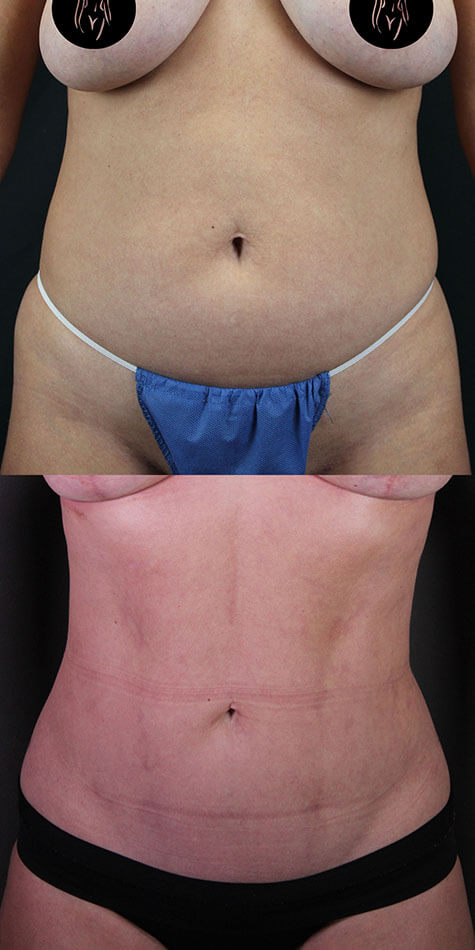
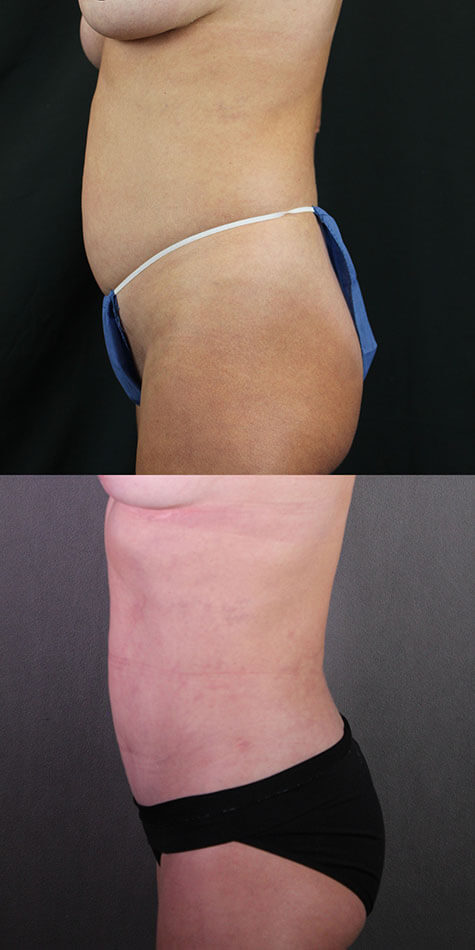
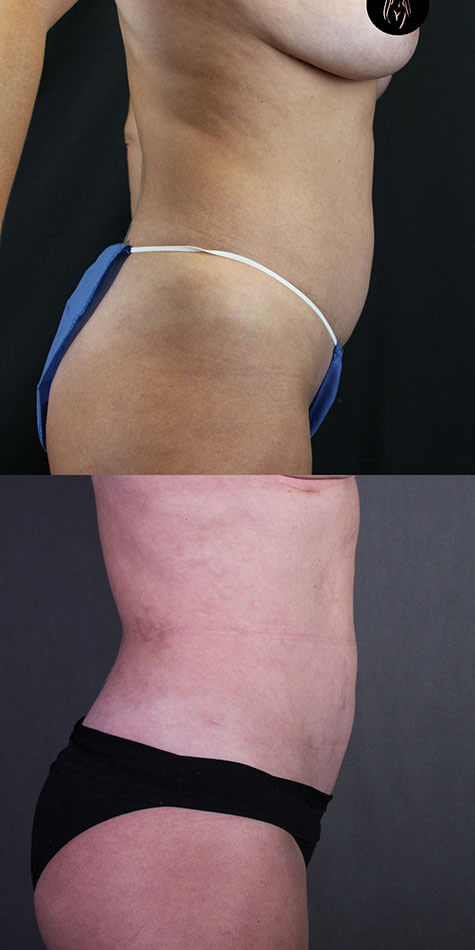
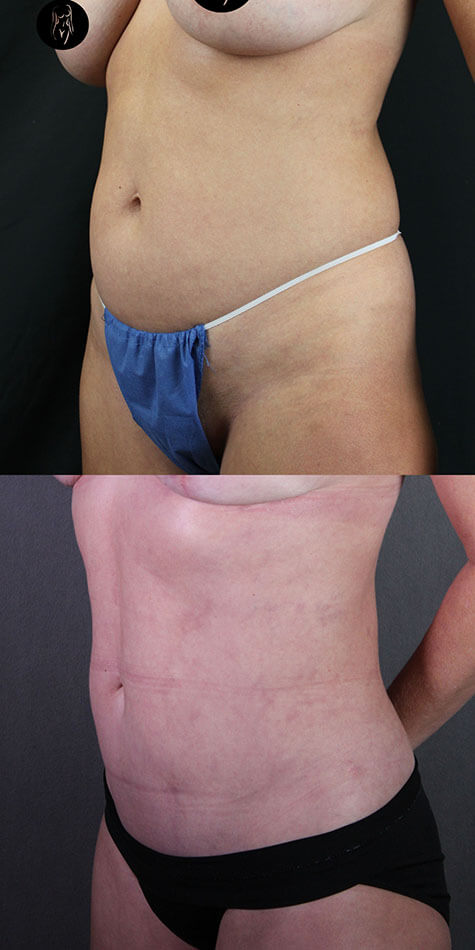
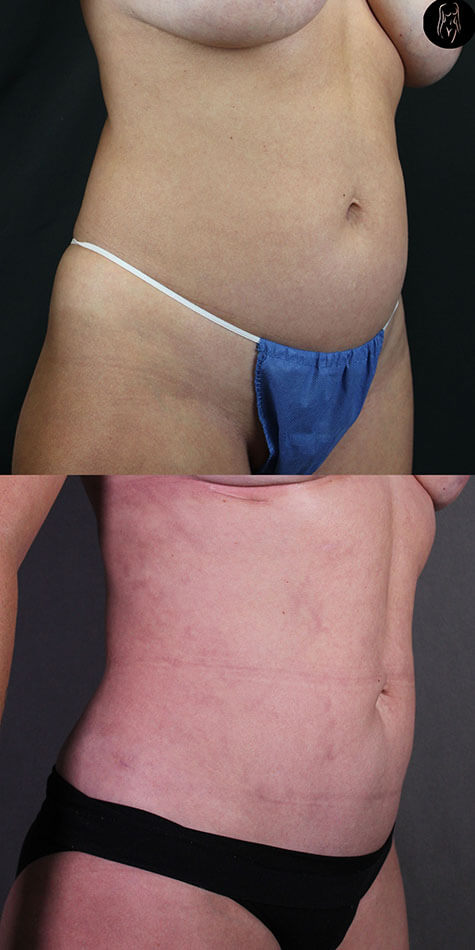
Liposuction FAQs
Q. Am I a good candidate for liposuction?
A. Ideal candidates for liposuction are close to their ideal weight with stubborn areas of fat that have been difficult to eliminate with diet and exercise. Liposuction candidates are in good overall health and do not have any pre-existing health conditions. It is important to have realistic expectations of the procedure and to understand that liposuction is not a weight-loss procedure. The best candidates have good skin tone and elasticity with localized fat deposits.
Q. Will liposuction improve the appearance of cellulite?
A. Although liposuction removes excess fat and usually provides the skin with a smoother appearance, liposuction doesn’t improve cellulite dimpling or other skin surface irregularities. If your skin is thin with poor elasticity, however, the skin in the treated areas may appear loose. Likewise, liposuction doesn’t remove stretch marks.
Q. How long will the results of liposuction last?
A. Liposuction permanently removes fat cells. However, the remaining fat cells in the treated area(s) can still increase in size with weight gain. Therefore, maintaining a stable weight by following a healthy diet and exercise regimen will preserve the results.
Q. How much does liposuction cost?
A. The total cost of liposuction depends on the number of areas treated and the amount of fat removed.
Q. Is liposuction covered by health insurance?
A. Health insurance providers do not cover the cost of liposuction because it is considered a cosmetic procedure.
